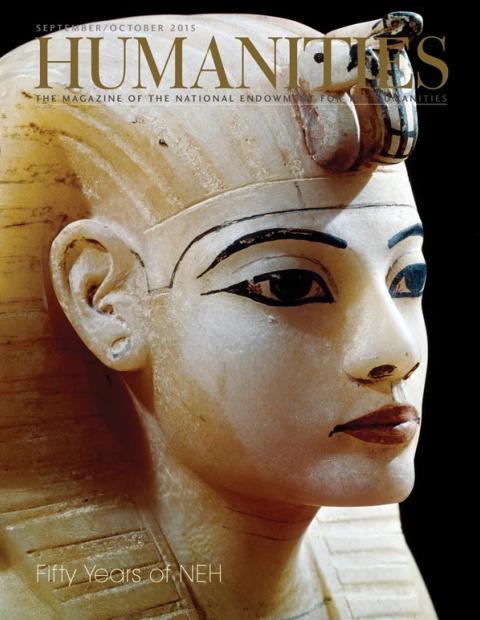Slashing, stabbing, a whirl of blades and bloodshed—that’s the samurai in the popular imagination. Yet as the exhibition “Samurai and the Culture of Japan’s Great Peace” at the Yale Peabody Museum of Natural History makes clear, Japan’s samurai were, for much of their history, far more concerned with the art of peace. Under the rule of a samurai bureaucracy during the Tokugawa Shogunate (1603–1868), Japan enjoyed more than two hundred fifty years of almost unbroken freedom from warfare, a record that no other major nation can rival.
The exhibition sprang from an inquiry by Robert Wheeler, one of the three cocurators. A retired professor of engineering and applied physics and a collector of Japanese ceramics, Wheeler came to the Peabody seeking tea ceremony equipment to share with fellow students in a history of art seminar. The ensuing search turned up as many as four thousand overlooked Japanese artifacts, including more than twenty samurai swords. A consultant from the Metropolitan Museum of Art determined that five of the swords were of some antiquity, and these were sent to Japan for restoration. When they were returned in 2013, planning began for an exhibition drawn from the rediscovered Japanese collections.
Wheeler, who had made himself an expert on Japanese lacquerware, another area of strength in the Peabody collection, was tapped as a curator, along with Fabian Drixler, a professor of history, and William Fleming, who teaches the history of Japanese theater as well as East Asian languages and literatures. The smorgasbord of skills assembled in this fashion shows itself in the exceptional breadth of the exhibition, which includes everything from costumes and masks of traditional Noh plays to books of woodblock prints designed to discourage the infanticide then common in many regions of Japan.
Wheeler’s expertise in materials science provided unexpected insights. He can tell, for example, from the hue of the vermilion in an antique lacquer surface whether the cinnabar used to create this color was from natural crystals or from a man-made form of the substance that marks a later restoration. It was his suspicion that the blackened center on one magnificent lacquer tray was not a product of tarnishing. X-ray fluorescence analysis revealed that the black was an iron pigment deliberately applied and that the scene was meant to depict an annular eclipse, not just a sun casting a moody light on a temple.
Central to the exhibition, supported by Connecticut Humanities, is the armor, which highlights the distinction between the Tokugawa period and the time of constant warfare that preceded it. A sixteenth-century helmet and faceguard have a stark, utilitarian appeal. Every detail, from rivets to the shape of the bowl, is designed to make it function better as military headgear. A Tokugawa-era helmet, by contrast, has thrown functionality overboard. Decorated with three-dimensional golden sea urchins and ringed with sea-urchinesque spikes, it would capture rather than deflect a sword swipe. But in an era when ceremonial fighting was more important than actual combat, this uniquely ornamented armor was the more useful of the two.
An innovative aspect of this exhibition is its emphasis on the Ainu, an indigenous people of northern Japan whose language and culture are distinct from those of the Japanese mainstream. Trade was lively between the Ainu and the Japanese, often producing hybrid goods such as the homespun robes that the Ainu embroidered with patchworks of Japanese fabrics, or the carved wooden religious objects that the Ainu sent south to Japan to be decorated with lacquer. Most intriguing is the magnificent lacquer bowl that an American collector, Mabel Loomis Todd, acquired from an elderly Ainu woman in 1896; motifs on the bowl suggest that it was made to celebrate the marriage of the adopted granddaughter of the first Tokugawa shogun.
Soon after Commodore Matthew Perry forced Japan to open its doors to the outside world, the shogunate collapsed and the samurai were stripped of their swords and their power. The exhibition traces this transition with a display of the sort of goods made by the Japanese to sell to western tourists, such as jewelry made with ornaments stripped from sword scabbards. The “Great Peace” had ended and ceremonial weapons were no longer in vogue.


